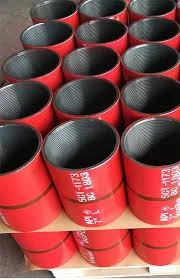- Afrikaans
- Albanian
- Amharic
- Arabic
- Armenian
- Azerbaijani
- Basque
- Belarusian
- Bengali
- Bosnian
- Bulgarian
- Catalan
- Cebuano
- Corsican
- Croatian
- Czech
- Danish
- Dutch
- English
- Esperanto
- Estonian
- Finnish
- French
- Frisian
- Galician
- Georgian
- German
- Greek
- Gujarati
- Haitian Creole
- hausa
- hawaiian
- Hebrew
- Hindi
- Miao
- Hungarian
- Icelandic
- igbo
- Indonesian
- irish
- Italian
- Japanese
- Javanese
- Kannada
- kazakh
- Khmer
- Rwandese
- Korean
- Kurdish
- Kyrgyz
- Lao
- Latin
- Latvian
- Lithuanian
- Luxembourgish
- Macedonian
- Malgashi
- Malay
- Malayalam
- Maltese
- Maori
- Marathi
- Mongolian
- Myanmar
- Nepali
- Norwegian
- Norwegian
- Occitan
- Pashto
- Persian
- Polish
- Portuguese
- Punjabi
- Romanian
- Russian
- Samoan
- Scottish Gaelic
- Serbian
- Sesotho
- Shona
- Sindhi
- Sinhala
- Slovak
- Slovenian
- Somali
- Spanish
- Sundanese
- Swahili
- Swedish
- Tagalog
- Tajik
- Tamil
- Tatar
- Telugu
- Thai
- Turkish
- Turkmen
- Ukrainian
- Urdu
- Uighur
- Uzbek
- Vietnamese
- Welsh
- Bantu
- Yiddish
- Yoruba
- Zulu
tubing crossover
Understanding Tubing Crossover in Oil and Gas Operations
In the field of oil and gas extraction, efficient operation and maintenance are crucial for maximizing production and ensuring safety. One concept that plays a significant role in this industry is the tubing crossover. This article aims to elucidate tubing crossover, its importance, and the implications it holds for drilling operations.
Definition of Tubing Crossover
Tubing crossover refers to the transition point where the production tubing connects with the casing or where it intersects with another fluid flow system. It is vital in directing the flow of hydrocarbons from the reservoir to the surface and managing the various pressures involved in these systems. Essentially, tubing crossover encompasses a number of scenarios, such as aligning production tubing with the casing or allowing multiple tubing strings to flow simultaneously.
The Importance of Tubing Crossover
The tubing crossover is fundamental for several reasons
1. Flow Control Properly designed tubing crossovers play a pivotal role in controlling the flow of oil, gas, and other fluids from the wellbore. This control is crucial for maintaining efficiency and maximizing production rates.
2. Pressure Management Oil and gas reservoirs operate under immense pressure. The crossover system must withstand these pressures and facilitate safe and effective fluid movement. An inadequate crossover design can lead to disastrous consequences such as blowouts or leaks.
3. Seamless Operations In multi-well or multi-zone completions, the need for effective tubing crossovers increases. These setups require precise engineering to manage various production zones while preventing cross-contamination among different fluids.
4. Reduced Maintenance Costs Effective design and implementation of tubing crossovers can lead to reduced maintenance needs. By minimizing wear and tear and ensuring that fluids flow smoothly without obstruction, operators can save on repair and replacement costs.
Types of Tubing Crossovers
There are various types of tubing crossovers, each designed for specific applications
tubing crossover

1. Standard Crossover This is the most basic form, where a single type of tubing transitions into another. It is commonly used in many standard drilling operations.
2. Multi-Well Crossover Designed for setups where multiple production lines are required, these crossovers allow the simultaneous extraction of oil or gas from different zones without interfering with one another.
3. Safety Crossovers These incorporate emergency shut-off features or failure-resistant designs to enhance the safety of operations. They are particularly important in high-pressure environments or volatile production settings.
Challenges and Considerations
While tubing crossover systems are vital, designing and implementing them comes with inherent challenges. These include
- Engineering Complexity Creating a reliable crossover system requires complex engineering solutions that can withstand the conditions of the reservoir, including temperature fluctuations and pressure changes.
- Material Selection The materials used must be robust enough to handle corrosive fluids and the stress of high-pressure environments. Failure to select appropriate materials can lead to premature failures and costly repairs.
- Cost Developing advanced crossover systems can be costly, and operators must find a balance between efficiency, safety, and expenditure.
- Regulatory Compliance Operators must ensure that their tubing crossover systems comply with environmental and safety regulations, which can sometimes complicate the design process.
Conclusion
Tubing crossover systems are integral to the efficient extraction of oil and gas, functioning as a critical interface in complex drilling operations. Understanding the various types, their importance, and potential challenges is key for operators in the oil and gas sector. As technology continues to advance, the future may bring more sophisticated tubing crossover designs that enhance safety, efficiency, and reduce operational costs even further. Therefore, ongoing research and development in this area are essential to meet the evolving demands of the industry and ensure sustainable production practices.
-
Well Casing Extension Couplings – Applications and InstallationNewsJun.06,2025
-
Types of Crossover Subs in Drilling & CompletionNewsJun.06,2025
-
Key Features of High-Quality Tubing Pup JointsNewsJun.06,2025
-
Installation and Maintenance Tips for Steel Couplings for PipeNewsJun.06,2025
-
How to Select the Right Pup Joint for Oil & Gas OperationsNewsJun.06,2025
-
Applications of Stainless Steel Pipe CouplingsNewsJun.06,2025







